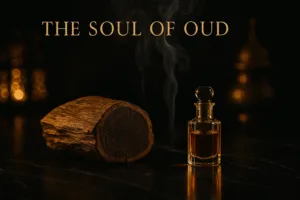I may earn a commission if you buy through links on this page, at no extra cost to you. As an Amazon Associate, I earn from qualifying purchases. I only recommend fragrances I’ve tested or genuinely believe in.
Seasons Rule the Scent Game
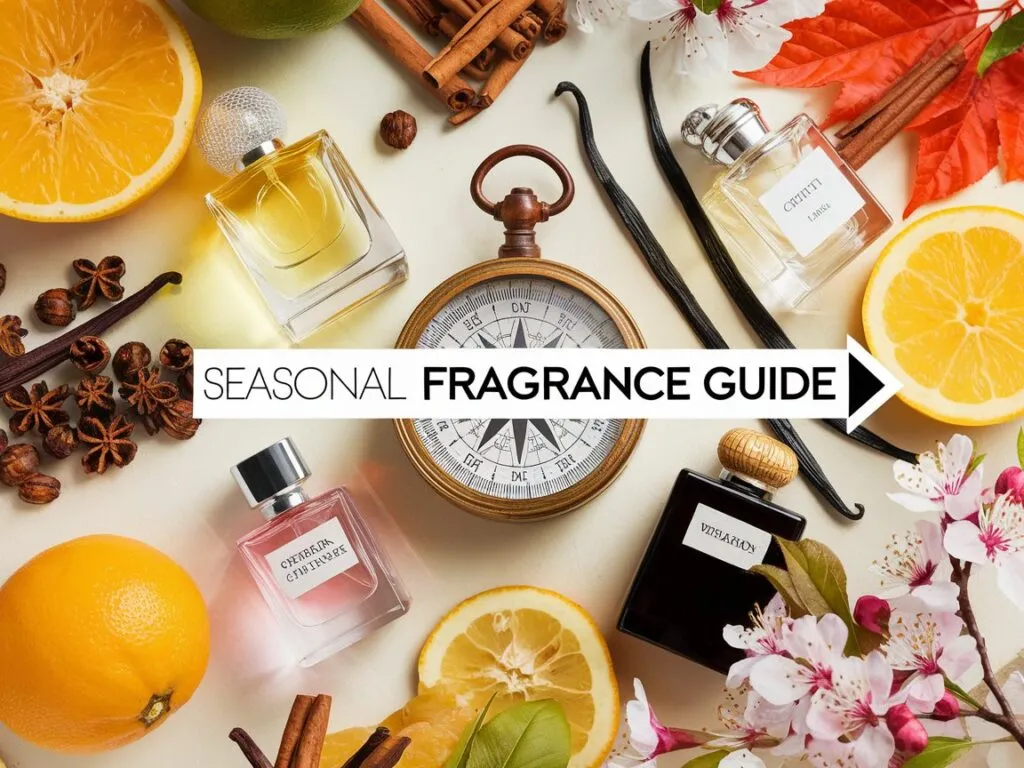
It was a blazing July afternoon, and I’d chosen my favorite vanilla spice scent—Tom Ford Tobacco Vanille—for a quick coffee run. By the time I stepped outside, the heat had transformed my perfume into a heavy, almost syrupy cloud that stuck around longer than I expected. That experience perfectly illustrates why knowing how to know which season a fragrance is designed for is so important—choosing the right scent for the weather can make all the difference in how it wears and how you feel.
As a fragrance consultant at a niche perfumery, I’ve helped countless people navigate how certain notes behave in heat or cold—and why choosing the right scent can make all the difference. Whether you’re into niche collections, designer classics, or rich Arabic ouds, this guide will help you decode seasonal cues, avoid fragrance flops, and build a versatile scent wardrobe.
Let’s get into it.
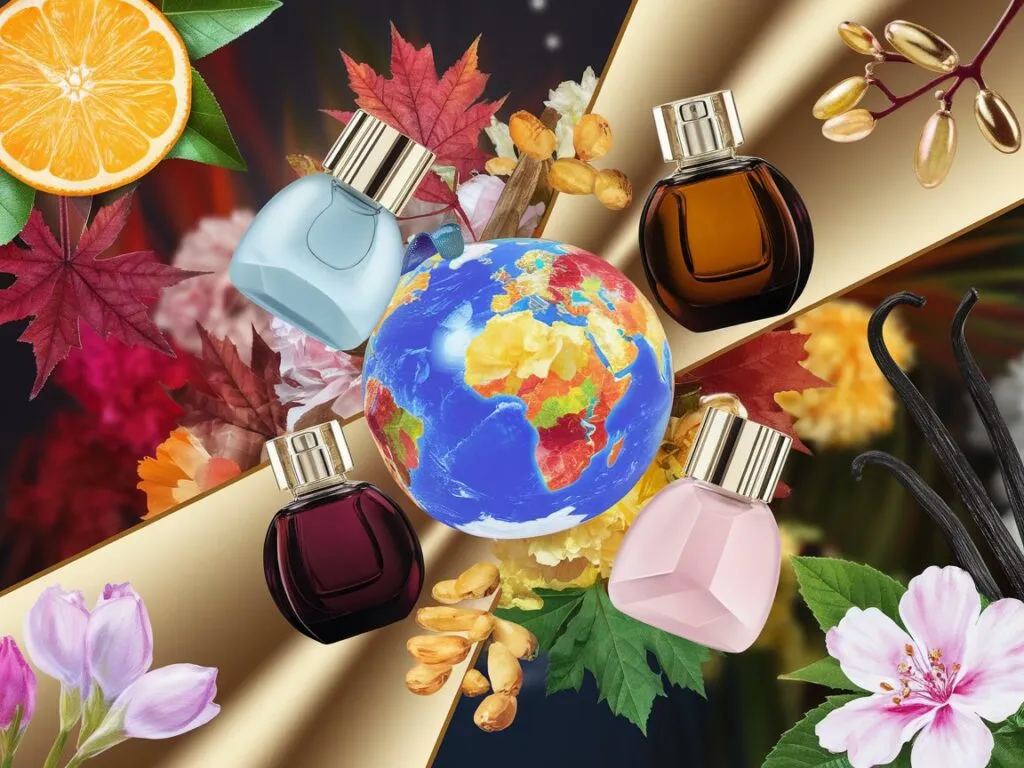
1: The Science of Seasonal Fragrances
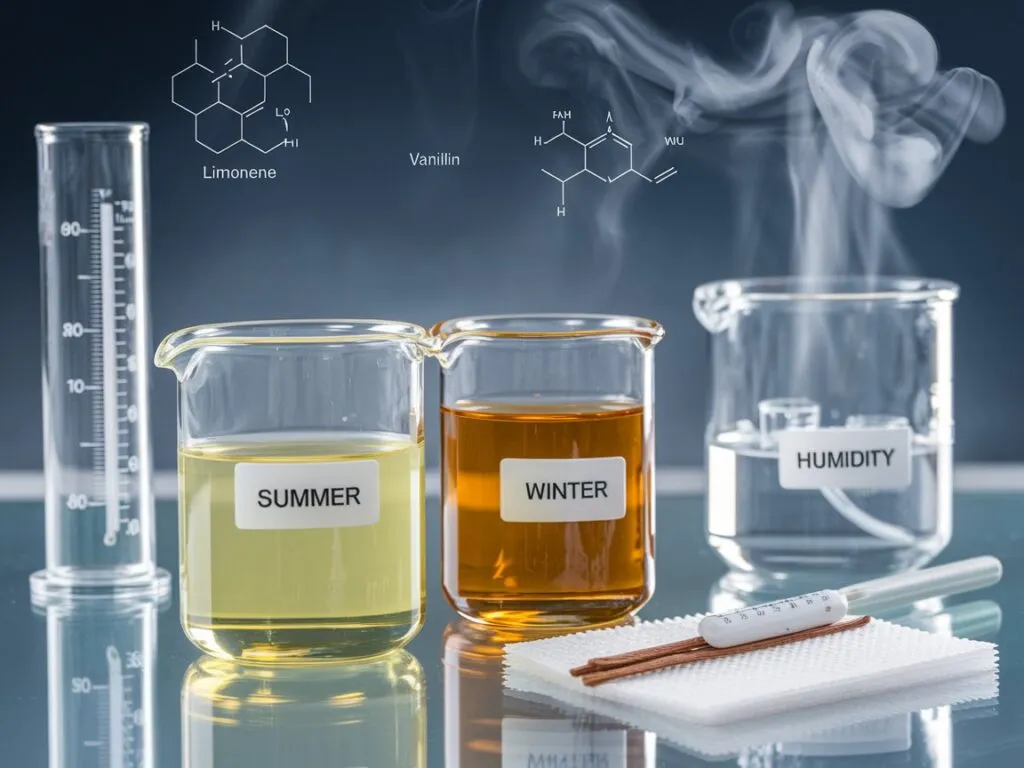
1.1 How Temperature Rewrites Scent Chemistry
To truly master how to know which season a fragrance is designed for, start with the molecular dance between perfume and weather.
Temperature’s Role:
- Heat acts like a spotlight on volatile top notes. Lightweight molecules (e.g., limonene in citrus or linalool in lavender) evaporate quickly, creating an intense but short-lived opening.
- For example, a citrus-forward cologne like Dior Homme Cologne bursts open in the summer heat but fades within hours.
- Cold, on the other hand, mutes delicate top notes but amplifies dense base molecules (e.g., vanillin, cedrol).
- Take Tom Ford Tobacco Vanille: Its vanilla and tobacco deepen in winter, lingering for 8+ hours.
Pro Tip: Use the “Blotter Test” to gauge seasonality:
- Spray a blotter.
- Leave it in your car for 20 minutes (hot or cold).
- Smell it. Overwhelming sweetness? Likely a winter scent. Faded citrus? Probably summer.
1.2 Humidity: The Invisible Amplifier
Humidity is critical for how to know which season a fragrance is designed for. Moisture in the air alters how scent molecules interact with your nose:
- High Humidity (summer/tropical climates):
- Sweet, woody, and resinous notes (vanilla, oud) turn cloying.
- Fresh, aquatic, or green scents (sea salt, basil) thrive.
- Real-World Fail: Wearing Kilian Love, Don’t Be Shy in Miami’s sticky humidity? That sticky-sweet marshmallow note turns from charming to overwhelming fast.
- Low Humidity (winter/desert climates):
- Crisp florals and citruses vanish quickly.
- Rich, boozy, or smoky notes (rum, incense) gain depth.
Key Takeaway: These humidity effects on fragrance mean you should search for best perfumes for tropical climates if you live in muggy regions.
1.3 Skin Chemistry: Your Body’s Seasonal Shift
Your skin isn’t static—it changes with seasons, affecting how to know which season a fragrance is designed for.
- Summer Skin:
- Oily skin retains scent longer but amplifies sweetness.
- Pro Tip: Opt for alcohol-based sprays (avoid oils) to prevent greasy overload.
- Winter Skin:
- Dry skin mutes projection. Hydrate with unscented lotion (e.g., CeraVe) before applying perfume.
- Layering Tip: Layer winter scents with a matching body oil (e.g., jojoba + Maison Francis Kurkdjian Grand Soir).
Case Study: A 2021 study found hydrated skin extends vanilla’s longevity by 40% in winter compared to dry skin.
1.4 Cultural & Regional Influences
While science drives how to know which season a fragrance is designed for, culture shapes preferences:
- Middle Eastern Winters: Heavy oud and amber scents (e.g., Amouage Interlude) thrive in cool, dry desert nights.
- Nordic Summers: Light, metallic aquatics (e.g., Creed Silver Mountain Water) mirror crisp fjord breezes.
Pro Tip: If you’re traveling, try travel-sized bottles or discovery sets to experiment with local climate suitability without committing to full bottles.
1.5 The Historical Roots of Seasonal Scents
Perfume’s ties to seasons aren’t new:
- Ancient Egypt: Light floral oils (lotus, jasmine) for hot summers; resinous myrrh for cool nights.
- 18th-Century France: Citrus-based “Eaux de Cologne” for summer; animalic musks for winter.
Modern Take: Brands like Jo Malone and Diptyque now explicitly market “seasonal collections,” but the science remains timeless.
1.6 Practical Exercise: Test Your Perfume’s Seasonality
- Step 1: Pick 3 fragrances from your collection.
- Step 2: Spray each on a blotter and expose to:
- Heat (leave in a sunny window).
- Cold (place in fridge for 30 mins).
- Step 3: Note how they evolve:
- Summer scents stay bright in heat but fade in cold.
- Winter scents intensify in cold but overwhelm in heat.
Example Results:
- Creed Aventus (summer): Pineapple fades in the fridge.
- YSL La Nuit de L’Homme (fall/winter): Spicy cardamom deepens when chilled.
Why This Matters: This fragrance longevity science is foundational for applying how to know which season a fragrance is designed for. To learn more about what perfume is please read this article.
2: Decoding Note Pyramids & Seasonal Cheat Sheets
2.1 The Anatomy of a Fragrance: Top, Heart, and Base Notes
To truly master how to know which season a fragrance is designed for, dissecting the note pyramid is essential. Every perfume unfolds in three layers:
- Top Notes (5–35 minutes):
- Role: The first impression—bright, fleeting, and designed to grab attention.
- Seasonal Clues: Citrus (bergamot, lemon), aquatic (sea salt), or green herbs (basil) dominate summer scents.
- Example: The bergamot in Dior Homme Cologne evaporates quickly in heat, making it ideal for summer.
- Heart Notes (1–3 hours):
- Role: The fragrance’s core personality—balanced and complex.
- Seasonal Clues: Fall thrives on spices (cardamom, cinnamon) and earthy fig; spring blooms with peony or dewy greens.
- For instance, the fig-and-cedar heart of Diptyque Philosykos embodies cozy fall sophistication.
- Base Notes (4+ hours):
- Role: The lingering trail—deep, resonant, and memorable.
- Seasonal Clues: Winter leans into vanilla, oud, or boozy accords (cognac); summer keeps it light with white musk.
- Take Tom Ford Oud Wood: Its smoky oud base deepens in cold weather, perfect for winter nights.
Why It Matters:
- Summer scents prioritize volatile top notes (they fade fast but feel refreshing).
- Winter fragrances invest in heavy base notes (they cling to dry skin and cold air).
2.2 Seasonal Cheat Sheet: Notes, Textures, and Picks
To simplify how to know which season a fragrance is designed for, use this expanded cheat sheet:
| Season | Top Notes | Heart Notes | Base Notes | Texture | Best For |
|---|---|---|---|---|---|
| Summer | 🍋 Citrus (bergamot, yuzu), 🌊 Aquatic (sea salt), 🌿 Green (mint) | 🌸 Light florals (neroli), 🍵 Green tea | ☁️ White musk, 🌲 Amberwood | Airy, crisp | Beach days, outdoor events |
| Fall | 🍂 Fig, 🌶️ Pink pepper, 🍎 Apple | 🪵 Smoky woods (cedar), 🍂 Spices (cardamom) | 🍂 Leather, 🔥 Amber | Warm, layered | Crisp mornings, bonfires |
| Winter | 🥃 Rum, 🌿 Saffron, ❄️ Frosted berries | 🌹 Rose, 🕯️ Incense, 🪵 Oud | 🍮 Vanilla, 🌰 Tonka | Thick, opulent | Holiday parties, cozy nights |
| Spring | 🌱 Green leaves (tomato stem), 🍐 Pear, 🌧️ Rainwater | 💐 Peony, 🌸 Lily of the valley | 🌲 Cedar, 🧼 Soft musk | Dewy, effervescent | Garden parties, fresh starts |
2.3 Perfume Picks by Season & Category
Summer:
- Niche: Creed Aventus Cologne (pineapple, birch) – A unisex summer staple.
- Designer: Chanel Allure Homme Sport (mandarin, cedar) – Polished freshness.
- Arabic: Rasasi Hawas (apple, aquatic notes) – Budget-friendly tropical vibes.
Fall:
- Niche: Byredo Bibliothèque (plum, leather) – Moody library-in-a-bottle.
- Designer: Viktor&Rolf Spicebomb Extreme (cinnamon, tobacco) – Spiced warmth.
- Arabic: Swiss Arabian Shaghaf Oud (rose, saffron) – Opulent yet wearable.
Winter:
- Niche: Kilian Angels’ Share (cognac, cinnamon) – Liquid dessert.
- Designer: YSL La Nuit de L’Homme (cardamom, cedar) – Seductive and cozy.
- Arabic: Al Haramain Amber Oud (amber, rose) – Affordable luxury.
Spring:
- Niche: Penhaligon’s Luna (gin, rose) – Moonlit garden freshness.
- Designer: Dolce&Gabbana Light Blue (citrus, apple) – Timeless crowd-pleaser.
- Arabic: Lattafa Ana Abiyedh (pear, musk) – Office-safe subtlety.
2.4 Pro Tips for Seasonal Fragrance Mastery
- Avoid Common Seasonal Mistakes:
- Heavy Scents in Summer Humidity: Wearing dense fragrances like Amouage Interlude (oud/amber) can turn cloying. Instead, opt for airy citrus or aquatic notes.
- Light Florals in Dry Winter Air: Delicate scents (e.g., Jo Malone Peony & Blush Suede) disappear. Swap for warm bases like vanilla.
- Layer Strategically for Climate Adaptability:
- Summer Hack: Pair aquatic scents (Maison Margiela Sailing Day) with an oil-free moisturizer.
- Winter Hack: Layer vanilla perfumes (Kilian Angels’ Share) with jojoba oil.
- Adjust Application Based on Season:
- Summer: Spray lightly on clothes (collars, sleeves).
- Winter: Apply generously to skin and fabrics.
- Seasonal Transition Hacks:
- Fall to Winter: Add cedarwood oil to spicy scents (Byredo Bibliothèque).
- Spring to Summer: Mix green tea notes (Bvlgari Eau Parfumée au Thé Vert) with citrus body wash.
Before we dive into seasonal recommendations, let’s first understand how fragrance molecules react to temperature and climate. This isn’t just about preference—it’s about science.
The Science Behind Seasonal Fragrances: Why Some Scents Work Better in Certain Weather
When choosing a seasonal fragrance, it’s not just about what smells good—it’s also about how scent molecules react to temperature and climate. The way a perfume performs can change drastically depending on the season. Let’s break it down scientifically.
How Heat Affects Fragrance Performance (Why Light Scents Work Best in Summer)
Fragrance molecules react differently depending on temperature. Heat increases molecular movement, making lighter notes (like citrus, green, and aquatic accords) evaporate faster. This is why summer fragrances often rely on fresh, bright top notes—they create an instant cooling effect, even if they don’t last all day.
Example:
- Acqua di Parma Colonia feels crisp and vibrant in summer, but its citrus notes dissipate quickly in high temperatures.
- Dior Homme Cologne is a fantastic summer choice because of its refreshing bergamot, but it doesn’t last as long as deeper, richer scents.
Expert Insight:
Perfumers recognize this pattern. As Francis Kurkdjian explains:
“Citrus notes fade very quickly, though they are the most refreshing.” (Vogue)
This is why perfumes with citrus, fresh florals, and aquatics are ideal for warm weather—they provide an immediate freshness but don’t overpower in the heat.
How Cold Weather Affects Fragrance Longevity (Why Deep Scents Work Better in Winter)
In contrast, cold air slows down fragrance diffusion. This means heavier notes—like amber, oud, vanilla, and resins—take longer to unfold but last much longer.
Example:
- Tom Ford Tobacco Vanille is a bold winter scent—its spicy, tobacco-vanilla blend unfolds slowly, making it perfect for cold weather.
- Maison Margiela By the Fireplace features warm chestnut and vanilla, which feel comforting and last longer in the cold.
Expert Insight:
Perfumers also highlight how warm scents feel cozier in winter. As Kelsey Hodgson describes:
“Tonka is a warm unisex scent that feels like a cashmere sweater.” (Business Insider)
This is why spicy, woody, and gourmand scents perform best in winter—they develop gradually, lingering on the skin without being overwhelming.
Humidity vs. Dryness: Why Climate Matters
Apart from temperature, humidity levels also impact how a fragrance behaves.
In humid climates, moisture in the air helps trap fragrance molecules, making even lighter scents last longer.
In dry air, fragrances evaporate more quickly, meaning stronger concentrations (EDP, extrait) work better than lighter EDTs.
Example:
- Chanel Coromandel (EDP) lasts longer in humid conditions, while an extrait de parfum version is better suited for drier climates.
- Creed Aventus can feel overpowering in high heat and humidity due to its smoky pineapple-ambergris blend.
The Best Notes for Each Season
Each fragrance note reacts differently based on temperature. Here’s a quick guide to which scent types work best in each season:
| Note Type | Why It Works in This Season | Example Fragrance |
|---|---|---|
| Citrus (Lemon, Bergamot, Grapefruit) | Refreshing but evaporates quickly in heat | Dior Homme Cologne (Summer) |
| Aquatic & Green Notes | Light and airy, cooling effect | Davidoff Cool Water (Summer) |
| Fruity (Pear, Pineapple, Apple) | Sweet, uplifting, pairs well with florals | Creed Aventus (Spring/Summer) |
| Spicy (Cardamom, Cinnamon, Pepper) | Adds warmth, blends well with woods | Viktor & Rolf Spicebomb (Fall) |
| Gourmand (Vanilla, Tonka Bean, Caramel) | Sweet, cozy, lingers longer in cold | Maison Margiela By the Fireplace (Winter) |
| Oud & Incense | Heavy, smoky, works in dry/cold weather | Amouage Interlude Man (Winter) |
How To Know Which Season A Fragrance Is Designed For: Summer
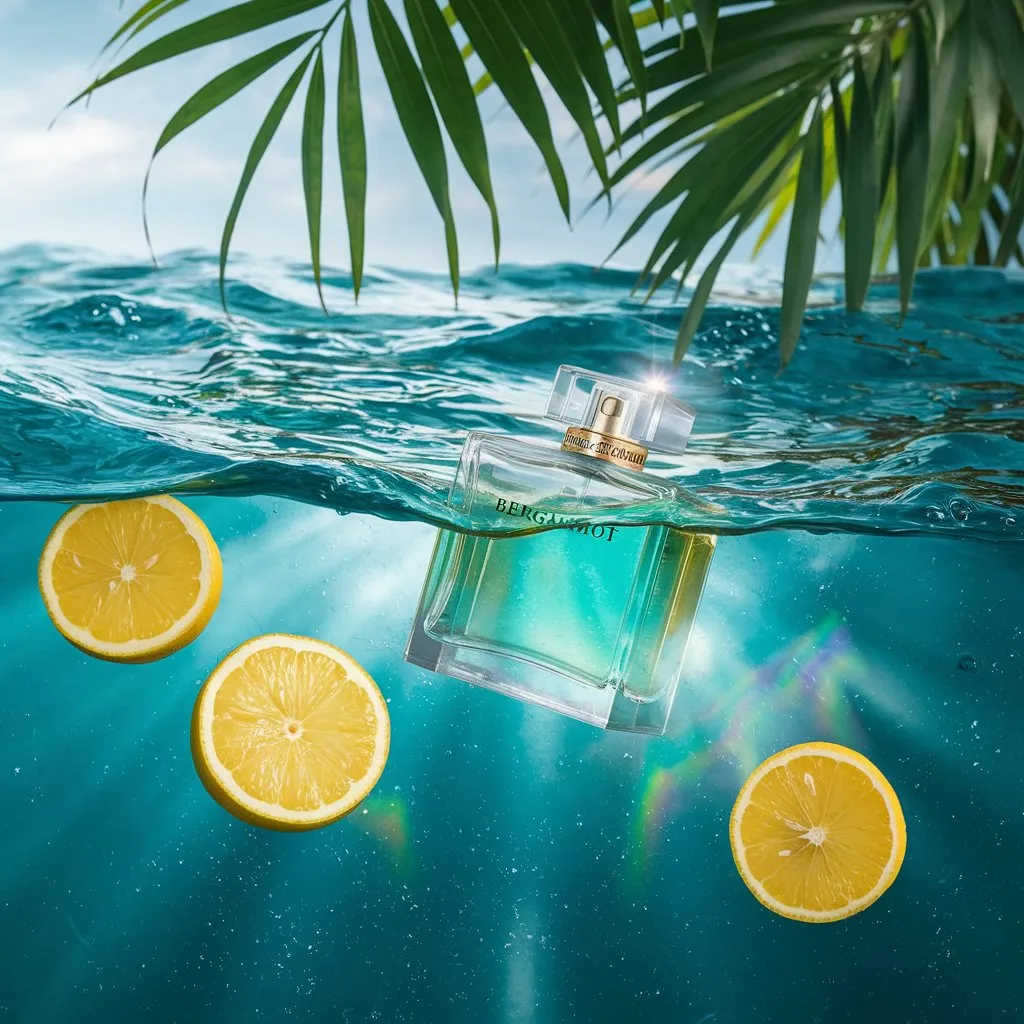
3: Summer Fragrances—Fresh, Solar, and Effortless
Look for:
- Top Notes: Citrus (bergamot, lemon), aquatic (sea salt), or green (basil).
- Texture: Lightweight, often labeled “Eau de Cologne.”
3.1 Best Summer Notes & Perfumes
Look for citrus (bergamot, lemon), aquatic (sea salt), or green (basil) top notes. Summer scents are lightweight, often labeled “Eau de Cologne” or “Eau Fraîche.”
Best Summer Picks for Every Budget
- Luxury ($250+): Tom Ford Mandarino di Amalfi
- Notes: Mandarin, basil, bergamot.
- Why It Works: Captures the zest of Italy’s Amalfi Coast—perfect for poolside glamour.
- Mid-Range ($120–$150): Jo Malone Wood Sage & Sea Salt
- Notes: Sea salt, sage, ambrette seeds.
- Why It Works: Unisex, breezy, and evokes a windswept beach.
- Budget (<$50): Nautica Voyage
- Notes: Apple, lotus, aquatic accord.
- Why It Works: A $20 crowd-pleaser that’s crisp and office-safe.
Pro Tip: Apply summer fragrances to clothing (collars, sleeves) to avoid oily skin altering the scent.
How To Know Which Season A Fragrance Is Designed For: Fall
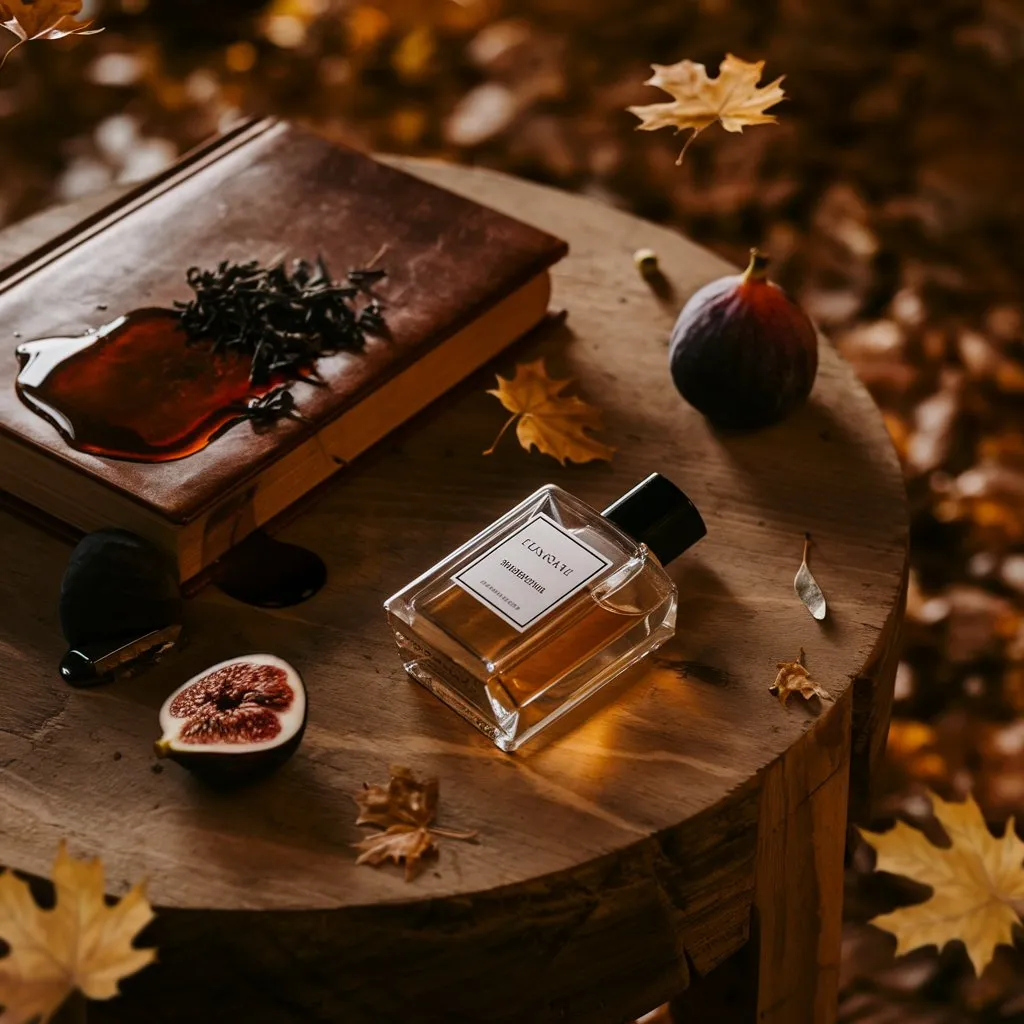
4: Fall Fragrances—Warm, Spicy, and Moody
Focus on spices (cardamom, cinnamon), fig, or smoky woods (cedar) in the heart notes. Fall scents are rich but balanced, like spiced apple cider.
Best Fall Picks for Every Budget
- Luxury ($280): Byredo Bibliothèque
- Notes: Leather, plum, vanilla.
- Why It Works: Smells like a cozy library with a hidden whiskey bar.
- Mid-Range ($130): Viktor&Rolf Spicebomb Extreme
- Notes: Cinnamon, vanilla, tobacco.
- Why It Works: A sweet-and-spicy hug in a bottle—ideal for crisp mornings.
- Budget ($30): Al Haramain Detour Noir
- Notes: Vanilla, lavender, tonka bean.
- Why It Works: A smoky-sweet gem that rivals pricier niche fragrances.
Pro Tip: Layer with cedarwood-scented lotion to boost longevity on dry skin.
How To Know Which Season A Fragrance Is Designed For: Winter

5: Winter Fragrances—Bold, Luxe, and Unapologetic
Look for vanilla, oud, tonka bean, or boozy accords (cognac) in the base notes. Winter scents are thick, resinous, and often labeled “Extrait de Parfum.”
Best Winter Picks for Every Budget
- Luxury ($300): Kilian Angels’ Share
- Notes: Cognac, cinnamon, tonka bean.
- Why It Works: Smells like a boozy apple pie—unapologetically decadent.
- Mid-Range ($150): Maison Margiela Replica By the Fireplace
- Notes: Chestnut, vanilla, guaiac wood.
- Why It Works: Nostalgic campfire vibes for cozy nights in.
- Budget ($25): Lattafa Khamrah
- Notes: Cinnamon, praline, tonka bean.
- Why It Works: A $25 dupe of Kilian Angels’ Share with gourmand warmth.
Pro Tip: Spray winter fragrances on wool scarves—fabrics hold scent longer in dry air.
How To Know Which Season A Fragrance Is Designed For: Spring
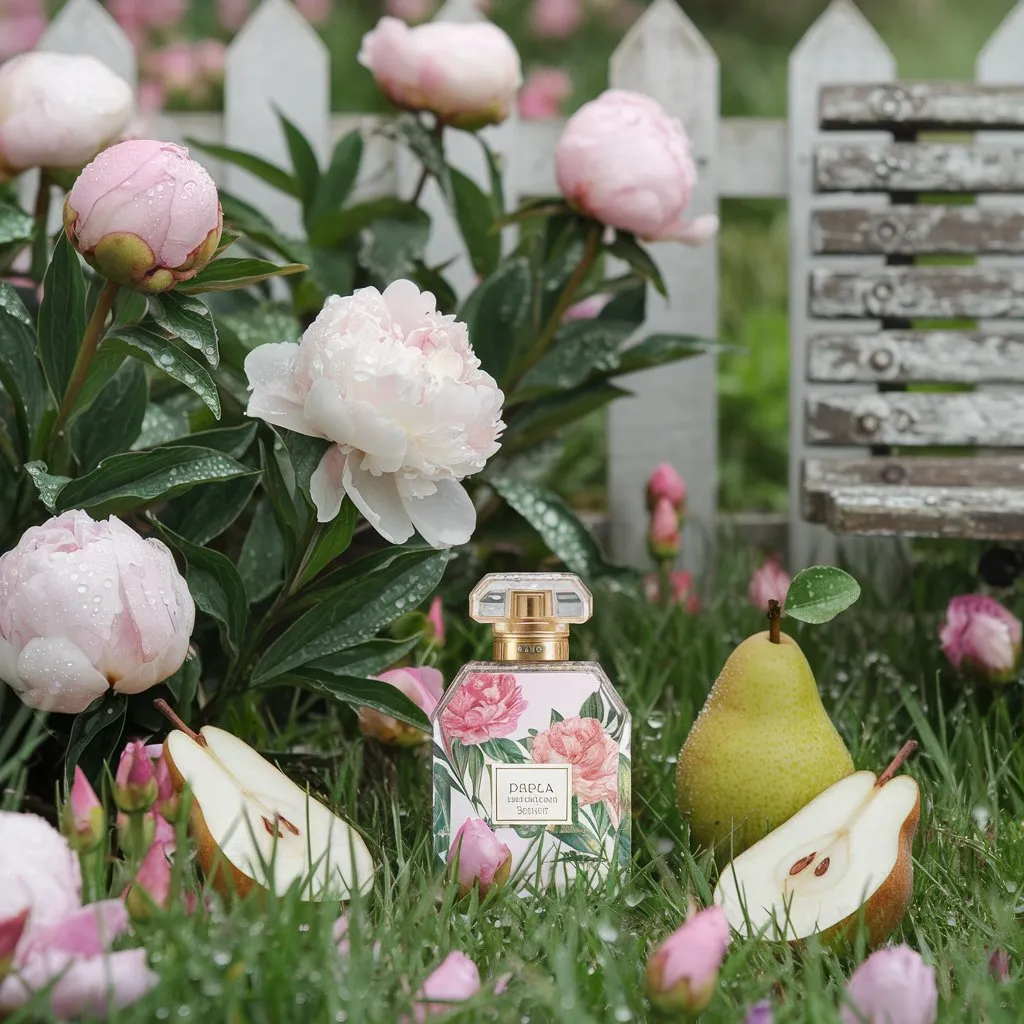
6: Spring Fragrances—Bright, Floral, and Optimistic
Look for dewy greens (tomato leaf), fruity florals (peony, rhubarb), or soft musks. Spring scents are airy and rejuvenating.
Best Spring Picks for Every Budget
- Luxury ($220): Diptyque Do Son
- Notes: Tuberose, sea breeze, musk.
- Why It Works: A dewy, sophisticated floral that’s never cloying.
- Mid-Range ($120): Marc Jacobs Daisy
- Notes: Strawberry, violet, gardenia.
- Why It Works: Timeless, playful, and perfect for daytime adventures.
- Budget ($22): Pacifica French Lilac
- Notes: Lilac, honeysuckle, fresh greens.
- Why It Works: A $22 burst of spring garden freshness.
Pro Tip: Spritz perfume on a hairbrush for subtle, wind-blown sillage.
7: Breaking the Rules—Wearing Off-Season Scents
Why It Works
Even tho science is important and these things are good to know, fragrances are art. Mastering how to know which season a fragrance is designed for gives you a foundation, but bending the rules lets you create unique scent stories.
Pro Hacks for Off-Season Wear
- Winter Scents in Summer
- How: Use heavy scents sparingly and strategically.
- Example: 1 spray of Kilian Angels’ Share (cognac, cinnamon) on a linen scarf for evening events.
- Why It Works: Heat amplifies sweetness, but minimal application prevents cloying.
- Summer Scents in Winter
- Year-Round Chameleons
- Citrus-Woody Hybrids:
- Bleu de Chanel (grapefruit, ginger, sandalwood) – Fresh enough for summer, warm enough for fall.
- Floral-Amber Blends:
- Narciso Rodriguez For Her (musk, amber, rose) – Light florals for spring, musky depth for winter.
- Citrus-Woody Hybrids:
Key Principles for Success
- Less Is More: 1–2 sprays max for off-season heavyweights.
- Layer Strategically: Pair light top notes (citrus) with cozy bases (vanilla, musk).
- Fabric Over Skin: Spray scarves, collars, or hair to control projection.
8: Seasonal Layering & Storage Tips
Layering Like a Pro
- Summer to Fall Transition
- Combo: Jo Malone Lime Basil & Mandarin + Maison Margiela Replica By the Fireplace.
- Why: Zesty citrus cuts through smoky vanilla, creating a balanced autumn vibe.
- Winter to Spring Transition
- Combo: Le Labo Santal 33 (sandalwood, leather) + Diptyque Oyedo (grapefruit, thyme).
- Why: Citrus brightens woody depth for early spring freshness.
- Universal Layering Bases
- Vanilla Oil (Nemat International): Adds sweetness to any scent.
- Cedarwood Rollerball (Kuumba Made): Grounds florals or citruses.
Storage Tips to Preserve Your Collection
- Summer Storage
- Avoid: Humidity and direct sunlight (e.g., bathrooms, windowsills).
- Use: A dark, cool drawer with silica gel packs to absorb moisture.
- Winter Storage
- Avoid: Dry air and radiators (dries out top notes).
- Use: Original boxes or airtight containers to lock in freshness.
- Year-Road Rules
- Temperature Control: Keep perfumes between 15–25°C (59–77°F).
- Upright Position: Prevents leakage and preserves alcohol balance.
Why This Matters
- Layering transforms your collection without buying new bottles.
- Proper storage extends shelf life by 1–2 years.
- Off-season experimentation makes fragrances feel new again.
Final Pro Tip: Track your layering combos and storage habits in a fragrance journal! 📔
9: Frequently Asked Questions
9.1 Can I Wear Coconut Scents in Winter?
Short Answer: Yes—if you layer strategically.
- How:
- Add Warmth: Pair a coconut-forward scent (Sol de Janeiro Cheirosa ’62) with a vanilla or sandalwood lotion (Nuxe Huile Prodigieuse).
- Limit Application: 1–2 sprays on clothing (not skin) to avoid overwhelming sweetness.
- Example Combo: Tom Ford Soleil Blanc (coconut, amber) + Laura Mercier Ambre Vanille lotion.
Pro Tip: Coconut works best in dry winter climates (e.g., mountain cabins) vs. humid regions.
9.2 What’s the Most Versatile Fragrance?
Short Answer: Citrus-woody hybrids or musky florals that bridge seasons.
- Top Picks:
- Mid-Range: Bleu de Chanel (grapefruit, ginger, sandalwood) – Fresh in summer, grounded in winter.
- Luxury: Le Labo Another 13 (ambroxan, moss, musk) – Adapts to skin chemistry for year-round wear.
- Budget: Zara Vibrant Leather (bergamot, suede) – A $30 Creed Aventus dupe.
Pro Tip: Test versatility by wearing the scent in both morning chill and afternoon heat.
9.3 How Do I Transition a Scent Between Seasons?
Short Answer: Use layering and note tweaks.
- Spring to Summer: Add a citrus body wash (Molton Brown Orange & Bergamot) to floral perfumes.
- Fall to Winter: Spike spicy scents (Spicebomb Extreme) with a drop of oud oil (Al Haramain Amber Oud).
- Year-Round Base: Glossier You (pink pepper, iris) – A skin-scent blank canvas.
Pro Tip: Keep a travel-size vial of a neutral scent (Maison Margiela Lazy Sunday Morning) for quick adjustments.
9.4 How Do I Test a Fragrance’s Seasonality?
Short Answer: Use the “Wrist Weather Test”:
- Morning: Apply to one wrist.
- Afternoon: Apply to the other.
- Compare: Does it fade in heat? Cling in cold? Cloy in humidity?
Example: Jo Malone English Pear & Freesia may sparkle in spring humidity but vanish in winter dryness.
Pro Tip: Test on blotters first to avoid skin commitment.
9.5 Can I Wear Heavy Oud in Summer?
Short Answer: Yes—with dilution.
- Hack: Mix 1 spray of Amouage Interlude (oud, amber) with 2 sprays of a citrus cologne.
- Where to Apply: Spray on the hem of a linen shirt or wide-brim hat for subtle sillage.
Pro Tip: Opt for lighter oud blends in summer, like Maison Francis Kurkdjian Oud Satin Mood (oud + rose).
9.6 What’s the Best Way to Choose a Signature Seasonal Scent?
Short Answer: Match your lifestyle and local climate.
- Hot/Humid Climates: Fresh aquatics (Dolce&Gabbana Light Blue) or green teas (Bvlgari Eau Parfumée au Thé Vert).
- Cold/Dry Climates: Resinous ambers (Guerlain Santal Royal) or boozy vanillas (Kilian Angels’ Share).
- Variable Weather: Skin scents (Escentric Molecules Molecule 01) that adapt to temperature.
Pro Tip: Sample 5ml decants before investing in full bottles. Read this article about signature scents and how to find yours!
Final FAQ Takeaway
Mastering how to know which season a fragrance is designed for is just the start. Experimentation, layering, and smart storage let you bend the rules while smelling incredible year-round.
Got a burning fragrance question? Drop it in the comments—we’ll tackle it in the next guide! 🔥
Conclusion: Your Seasonal Fragrance Journey—Where Knowledge Meets Creativity
Learning how to know which season a fragrance is designed for empowers you to make intentional choices, but it’s only the beginning. Fragrance is an art—a way to express mood, personality, and even rebellion. While understanding seasonal notes (citrus for summer, vanilla for winter, spices for fall, florals for spring) gives you a roadmap, the real magic happens when you bend the rules to suit your story.
Key Takeaways
- Science Guides, Creativity Leads: Use the note pyramid and weather insights as tools, not constraints. A winter oud can shine in summer nights with a light hand, and a summer citrus can brighten winter gloom when layered thoughtfully.
- Experiment Fearlessly: Your skin, climate, and mood are unique. Test, layer, and mix scents to create your signature vibe.
- Quality Over Seasonality: A well-crafted fragrance transcends seasons. If it makes you feel unstoppable, wear it—no matter the weather.
Final Pro Tip
Keep a scent journal to track how perfumes evolve on your skin in different climates. Note what works, what fades, and what surprises you. Over time, you’ll curate a collection that’s as dynamic as you are.
Now it’s your turn! Drop your favorite seasonal scent (or off-season hack) in the comments. Let’s build a community where curiosity and confidence reign. 🌸
Final Thought:
Fragrance isn’t just about smelling good—it’s about feeling alive. Whether you’re spritzing a snowy-day vanilla in July or a beachy coconut in December, remember: the best scent is the one that makes you feel like the main character.
Here’s to seasons of scent, endless experimentation, and the joy of wearing your story.
Have you ever noticed how your favorite scent performs differently in summer vs. winter? Do you have a go-to fragrance for each season? Let’s discuss in the comments below!


About Rodrigo Hernández
Fragrance consultant at Liquo (Santiago, Chile). I test designer and niche releases weekly, keep personal wear logs, and cross-check notes and performance in different climates. Opinions are my own; no brand pays for favorable coverage.
Contact: contact@scentchronicles.com



